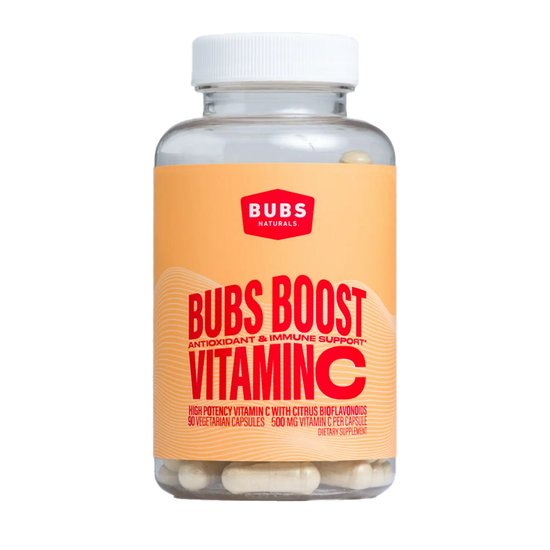Table of Contents
- Introduction
- What Is Vitamin C and Why Do We Need It?
- Recommended Daily Requirements and Sources
- Can You Ever Take Too Much Vitamin C?
- The Body’s Response to Vitamin C Intake
- Practical Recommendations for Vitamin C Intake
- Conclusion
When it comes to vitamins, vitamin C often takes the spotlight. Whether it's touted for its supposed immunity-boosting benefits or its role as a powerful antioxidant, many of us are on a quest for that ideal daily dose. But as we explore the landscape of supplementation, a pressing question arises: is it safe to take 6000 mg of vitamin C?
In this post, we’ll dive deep into the science behind vitamin C, its necessity in our diets, the potential for overconsumption, and the evidence surrounding high doses. By the end, we aim to clear the fog around this critical nutrient and provide you with a well-rounded understanding of how much vitamin C might truly be too much.
Introduction
Every day, countless individuals take vitamin C supplements, believing that more is better—a notion that is often amplified by marketing strategies and wellness trends. With claims ranging from improved skin health to better immune function, it’s not surprising that some opt for mega-doses, pushing their limits to 6000 mg or beyond.
While vitamin C is celebrated for its essential roles—from collagen production to iron absorption—the realities of high doses present a complex narrative. Historically, we know that sailors suffered from scurvy due to vitamin C deficiency, leading to symptoms such as gum bleeding, fatigue, and skin issues. Today, we have transformed this narrative with ample access to vitamin C-rich foods, yet the quest for higher supplementation brings new questions about safety.
In this post, we’ll cover:
- What vitamin C is and its key health benefits
- Recommended daily intake and populations at risk for deficiency
- The risks of exceeding recommended amounts, particularly at high doses like 6000 mg
- Insights on how the body processes vitamin C to mitigate or exacerbate side effects
- Practical tips for reaching your vitamin C needs effectively
As we traverse this topic, we want to empower you with knowledge that goes beyond simple recommendations, touching upon real implications and evidence-backed information.
What Is Vitamin C and Why Do We Need It?
Vitamin C, also known as ascorbic acid, is a water-soluble vitamin that plays several vital roles in our health. This essential nutrient is not synthesized by our bodies, making dietary intake crucial. Here’s why vitamin C is often hailed as a superhero in the nutrient world:
- Antioxidant Properties: Vitamin C serves as a powerful antioxidant, helping to neutralize harmful free radicals that can damage cells and contribute to chronic diseases.
- Immune Function: It is known to maintain and boost the immune system, playing a key role in immune responses.
- Collagen Production: Vitamin C is essential for synthesizing collagen, a structural protein vital for skin, tendons, and blood vessels. This means it plays a significant role in wound healing.
- Iron Absorption: It aids in the absorption of non-heme iron (the type found in plant foods), making it particularly important for individuals susceptible to iron deficiency.
We can find vitamin C in various foods, especially fruits and vegetables. Some of the most notable sources include:
- Oranges and citrus fruits
- Strawberries
- Kiwifruit
- Bell peppers
- Broccoli
- Brussels sprouts
Many health organizations recommend a daily intake of 90 mg for men and 75 mg for women, with additional needs for pregnant and lactating women.
Recommended Daily Requirements and Sources
Understanding the daily requirements for vitamin C helps us gauge how much we should be consuming daily and sheds light on potential deficiencies. According to the U.S. National Institutes of Health, the average recommended daily allowance (RDA) for vitamin C varies by age and gender:
| Age Group | Recommended Amount (mg) |
|---|---|
| 0–6 months | 40 |
| 7–12 months | 50 |
| 1–3 years | 15 |
| 4–8 years | 25 |
| 9–13 years | 45 |
| 14–18 years (Male) | 75 |
| 14–18 years (Female) | 65 |
| 19+ years (Male) | 90 |
| 19+ years (Female) | 75 |
| Pregnancy | 85 |
| Lactation | 120 |
Most people who consume a balanced diet will meet or exceed these requirements through natural food sources. However, certain populations may struggle to achieve adequate levels, including those who smoke, are pregnant, or experience chronic illnesses.
Can You Ever Take Too Much Vitamin C?
The question surrounding whether you can take too much vitamin C is critical, especially as some individuals adopt a “more is better” mindset with their supplementation practices. While vitamin C is relatively safe compared to fat-soluble vitamins which can accumulate in the body, excessive consumption still carries risks.
The Upper Limits
The established upper intake level (UL) for adults is set at 2,000 mg per day. Exceeding this amount can lead to undesirable gastrointestinal symptoms, such as:
- Diarrhea
- Nausea
- Stomach cramps
- Headaches
These effects result from the body's osmotic response, which occurs when unabsorbed vitamin C draws water into the intestines, causing digestive distress. But what about extreme levels like 6000 mg?
Serious Concerns at High Doses
Taking 6000 mg of vitamin C daily far exceeds the upper limit and could potentially lead to several health complications:
- Kidney Stones: Excess vitamin C is metabolized into oxalate, a substance that can crystallize and form kidney stones, particularly in susceptible individuals.
- Iron Overload: When taken in excess, vitamin C can enhance the absorption of non-heme iron, posing risks for individuals with conditions like hemochromatosis, where the body accumulates excessive iron.
- Potential Drug Interactions: High doses may interfere with certain medications, particularly those for managing chronic conditions.
Conclusion on Upper Limits
While the body can excrete excess vitamin C, chronic consumption of mega-doses could disrupt bodily functions and prompt adverse reactions. Therefore, while 6000 mg is unlikely to be acutely toxic for everyone, it is not recommended and should only be considered under medical supervision.
The Body’s Response to Vitamin C Intake
Our bodies are adept at handling vitamins, but the way we process each nutrient can vary from person to person. Here’s what you need to understand about vitamin C metabolism:
- Absorption Rates: The absorption of vitamin C decreases as the dose increases. At doses above 200 mg, the proportion absorbed diminishes. For instance, taking 2000 mg means your body might only effectively utilize a fraction of what you consume.
- Excretion: Because vitamin C is water-soluble, excess amounts are typically excreted in urine, which is the body's natural means of regulating its levels.
Understanding metabolization allows us to better appreciate the impact of dietary sources versus supplements; nutrient-rich foods often provide a more balanced and safer intake of vitamin C.
Practical Recommendations for Vitamin C Intake
To ensure you are meeting your vitamin C needs safely and effectively, consider these practical recommendations:
-
Prioritize Food Sources: Aim to get your vitamin C from a diverse array of fruits and vegetables. Not only does this provide you with a steady intake, but it also introduces additional nutrients.
-
Supplement When Necessary: If you believe you might not be getting enough vitamin C through diet alone, consider supplements. However, keep them within the recommended bounds—typically no more than 500–1000 mg unless guided by a healthcare provider.
-
Monitor Your Health: Pay attention to how your body responds, especially if taking higher doses. If you experience gastrointestinal discomfort, consider reducing your intake.
-
Consult a Professional: If you’re considering significant deviations from the recommended guidelines, whether due to health conditions or lifestyle, speaking with a healthcare provider can ensure you’re making informed choices.
By adhering to these guidelines, we can embrace the crucial benefits of vitamin C while minimizing the risks associated with excessive consumption.
Conclusion
In answering the question, is it safe to take 6000 mg of vitamin C?, it becomes clear that while vitamin C is essential for health, excessive doses can lead to unwanted side effects and health implications. As best practice, we should prioritize obtaining vitamin C through a balanced diet rich in fruits and vegetables, reserving supplements for instances where dietary intake may fall short.
Our modern lifestyle, filled with convenience and processed foods, often necessitates a thoughtful approach to nutrition. By understanding the balance required and maintaining awareness about nutrient intake limits, we can support our health without risking adverse effects.
FAQ Section
1. Can taking 6000 mg of vitamin C daily be harmful? While most people may tolerate high doses of vitamin C, 6000 mg exceeds the upper limit and could lead to gastrointestinal problems, kidney stones, and nutrient interactions.
2. What are the signs of vitamin C deficiency? Symptoms of deficiency include fatigue, weakness, swollen gums, and skin issues. Severe deficiency can lead to scurvy.
3. How much vitamin C do I need daily? The average recommended intake is 90 mg for men, 75 mg for women, with higher needs during pregnancy and lactation.
4. Are there any benefits to high doses of vitamin C? Some studies suggest high doses can slightly reduce cold duration. However, overwhelming evidence does not support their effectiveness in preventing illness.
5. Should I take vitamin C supplements? It’s best to consult a healthcare provider; however, obtaining vitamin C from natural food sources is generally recommended unless supplementation is warranted.
By adopting a balanced approach and adhering to established guidelines, we can optimize our well-being and honor our commitment to health and wellness—principles we hold dear at BUBS Naturals as we strive to support active lifestyles with clean, effective supplementation.
Written by:
Bubs Naturals

Vitamin C
Starts at $15.00
Shop

